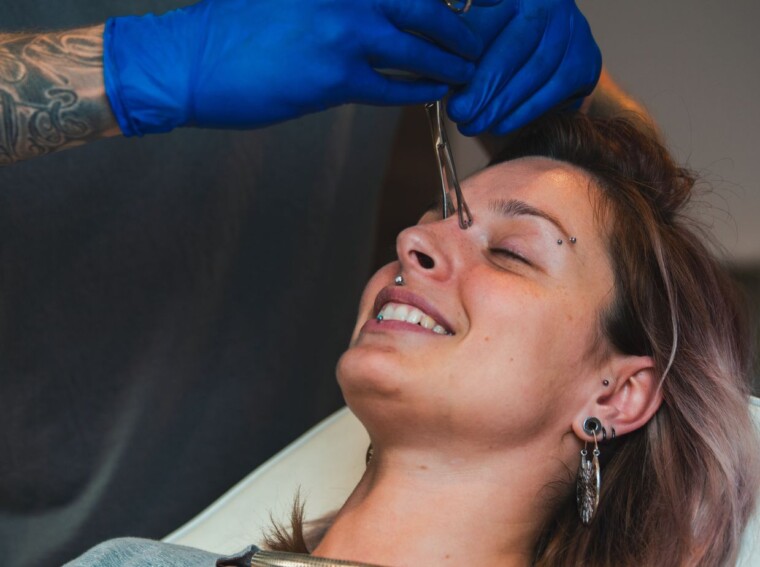When it comes to getting a helix piercing, one of the most common questions people have is: how long does it take for a helix to heal? Healing time can vary depending on several factors, including individual differences and aftercare practices. However, on average, it typically takes about 3 to 6 months for a helix piercing to fully heal.
During the initial healing period, it’s important to follow proper aftercare instructions to promote healing and avoid complications. This includes cleaning the piercing with saline solution or mild soap, avoiding touching or twisting the jewelry unnecessarily, and refraining from sleeping on the pierced ear. It’s also crucial to avoid swimming in pools or bodies of water that may contain bacteria.
How Long Does It Take for a Helix to Heal
Infection Risks and Healing Time
When it comes to helix-piercing healing time, the risk of infection plays a significant role. An infected helix piercing can delay the healing process and cause discomfort. It’s essential to keep the pierced area clean and follow proper aftercare guidelines to minimize the chances of infection.
Factors that increase the risk of infection include:
- Touching the piercing with dirty hands or allowing others to touch it
- Sleeping on dirty pillowcases or using unclean hair products
- Swimming in pools, hot tubs, or bodies of water that may contain bacteria
- Wearing tight-fitting hats or headphones that can trap dirt and sweat near the piercing
Impact of Jewelry on Helix Healing
The choice of jewelry for your helix piercing can also affect healing time. The material, size, and design of the jewelry all play a role in how quickly your helix will heal.
Some factors to consider when selecting jewelry for optimal healing are:
- Material: Opt for high-quality materials like surgical-grade stainless steel, titanium, or 14k gold, as they are less likely to cause irritation.
- Size: Choose appropriately sized jewelry that allows room for swelling during initial healing but is not too loose.
- Design: Avoid complex designs or heavy dangling pieces during the initial stages, as they can put unnecessary strain on the piercing site.

Average Healing Time for a Helix Piercing
Factors Affecting Healing Time
When it comes to the average healing time for a helix piercing, several factors can influence how quickly or slowly the piercing heals. Here are some key factors to consider:
- Individual Differences: Each person’s body is unique, and healing times can vary from individual to individual. Factors such as age, overall health, and immune system function can affect how quickly your helix piercing heals.
- Piercing Technique: The manner in which the helix piercing was done also plays a role in the healing process. Professional piercers who adhere to proper hygiene practices and use sterile equipment reduce the risk of complications and promote faster healing.
- Aftercare Routine: Consistent and proper aftercare is crucial for optimal healing. Following your piercer’s instructions on cleaning solutions, avoiding irritants like harsh soaps or hair products near the piercing, and gently rotating jewelry (if recommended) can all contribute to a smooth healing process.
- Jewelry Choice: The type of jewelry you choose initially can impact healing time. High-quality materials like titanium or surgical steel are generally recommended due to their biocompatibility and reduced risk of allergic reactions.
- Lifestyle Habits: Certain lifestyle habits may slow down the healing process or increase the risk of complications for your helix piercing. These habits include sleeping on the pierced side, excessive touching or twisting of jewelry, exposure to excessive moisture (such as swimming pools), and wearing tight-fitting hats or headphones that put pressure on the area.
Signs of a Healing Helix Piercing
As your helix piercing progresses through its healing journey, there are some signs that indicate it’s on track:
- Reduced Pain and Swelling: Initially, you may experience some pain and swelling around the pierced area; however, as time passes, these symptoms should gradually subside.
- Minimal Discharge: During the healing process, it’s normal to have some clear or slightly yellowish discharge. However, excessive pus-like discharge, extreme redness, or foul odor could indicate an infection and should be addressed by a professional.
- Formation of a Crust: A thin crust may form around the piercing site as part of the natural healing process. Avoid picking at it to prevent irritation and potential complications.
In conclusion, everyone’s healing process is different, but if you experience any of these symptoms or have concerns about your helix piercing, don’t hesitate to reach out to a professional piercer or healthcare provider. They have the knowledge and expertise to address your specific situation and ensure that your helix piercing heals properly.

